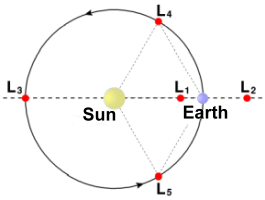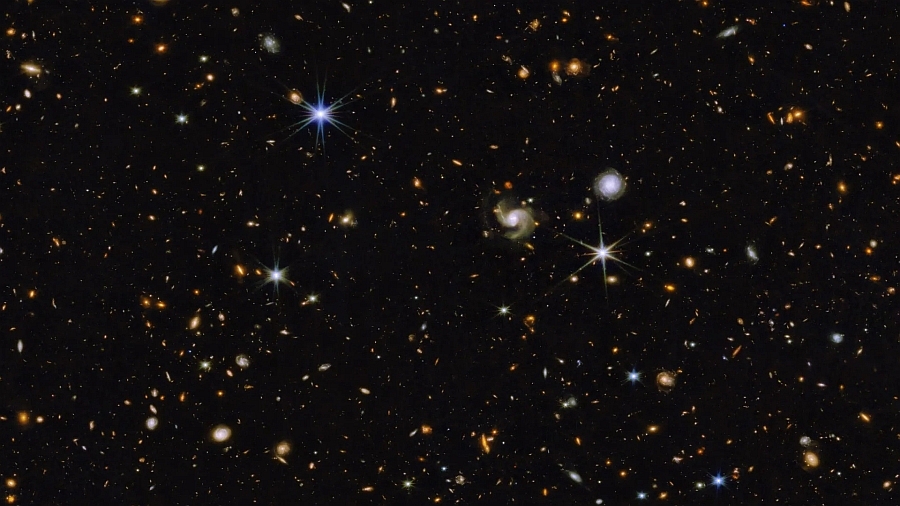
 The James Webb telescope was launched on December 25, 2021. It is currently conducting infrared astronomy. Webb has four scientific instruments, the near-infrared camera, spectrograph, slitless spectrograph, and a mid-infrared instrument. Each of these uses infrared detectors to capture light from distant astronomical sources. As the largest optical telescope in space, it can view objects too old, distant, or faint for the Hubble Space Telescope.
The James Webb telescope was launched on December 25, 2021. It is currently conducting infrared astronomy. Webb has four scientific instruments, the near-infrared camera, spectrograph, slitless spectrograph, and a mid-infrared instrument. Each of these uses infrared detectors to capture light from distant astronomical sources. As the largest optical telescope in space, it can view objects too old, distant, or faint for the Hubble Space Telescope. This makes possible research across many fields of astronomy and cosmology, such as observation of the first stars, the formation of the first galaxies, and detailed studies of potentially habitable exoplanets. The design of this new telescope emphasizes infrared light for a number of reasons:
 Webb traveled for about a month to reach its orbit at the second Sun-Earth Lagrange point (L2), which is 1.5 million kilometres from Earth. Webb needs to be kept very cool to measure the heat from objects in the universe, so its location at L2 keeps it far from infrared emissions from the Earth and Moon.
Webb traveled for about a month to reach its orbit at the second Sun-Earth Lagrange point (L2), which is 1.5 million kilometres from Earth. Webb needs to be kept very cool to measure the heat from objects in the universe, so its location at L2 keeps it far from infrared emissions from the Earth and Moon. Lagrange points are positions in space where objects sent there tend to mostly stay put. These points in space can be used by spacecraft to reduce the fuel consumption needed to remain in position. The L2 point of the Earth-Sun system is ideal for astronomy because a spacecraft is close enough to easily communicate with Earth, and can keep the Sun, Earth and Moon behind the spacecraft with appropriate shielding that will allow a clear view of deep space. L2 is unstable on a time scale of approximately 23 days, which means Webb must undergo regular course and attitude corrections.  Webb’s segmented primary mirror has a diameter of 6.6 meters. Each of the 18 segments is 1.3 meters across. The area of the mirror is about 25 square meters. The Webb telescope uses 132 small motors to position and adjust the optics.
Webb’s segmented primary mirror has a diameter of 6.6 meters. Each of the 18 segments is 1.3 meters across. The area of the mirror is about 25 square meters. The Webb telescope uses 132 small motors to position and adjust the optics.
The sunshield dimensions are 21 by 14 meters and the height of the entire craft is 8 meters. To accurately and precisely detect faint infrared light from distant objects in the universe, Webb must be shielded from the strong infrared light coming from the Sun, Earth, and Moon. The sunshield’s five layers block the light from these nearby objects. The Webb telescope is powered by a 2,000 watt solar panel array. It has a propulsion system to maintain its orbit and attitude. Webb can send back to Earth at least 57 gigabytes of recorded science data every day, with a maximum rate of 28 MB per second. The James Webb Space Telescope has shown that galaxies formed much sooner after the Big Bang than scientists previously thought, and that some of them are unexpectedly large.  The image above reveals thousands of galaxies seen in just one little piece of the sky. Click on it to enlarge it. Notice the spiral galaxies. Nearby stars in the foreground, within our own Milky Way galaxy, are the objects with spikes of light coming out of them. "This beautiful color image unveils in unprecedented detail and to exquisite depth a universe full of galaxies to the furthest reaches, many of which were previously unseen by Hubble or the largest ground-based telescopes, as well as an assortment of stars within our own Milky Way galaxy," NASA said. |